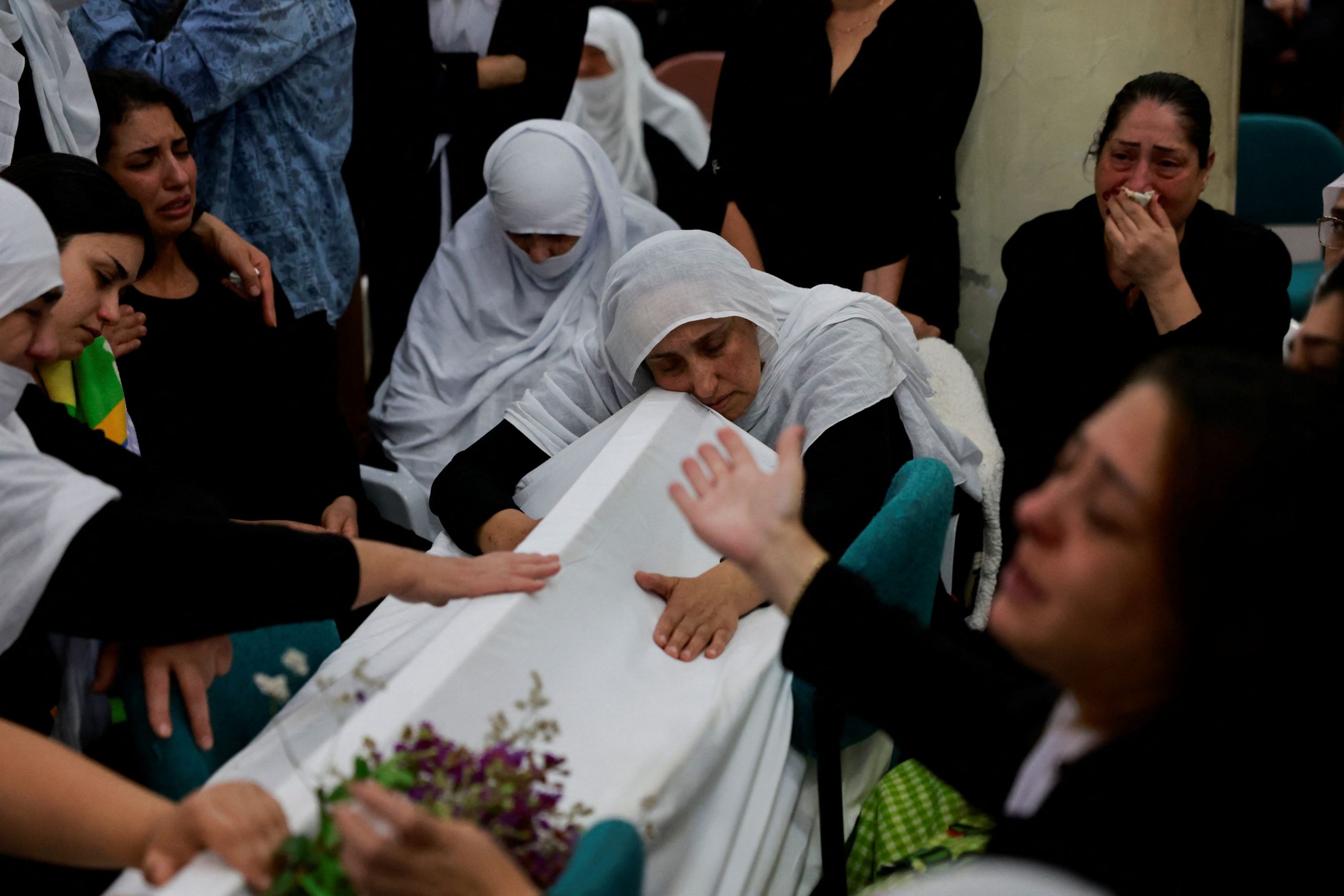TEL AVIV—A rocket strike on a soccer field full of young people in the Israel-controlled Golan Heights left a scene of carnage Saturday and threatened to escalate the already tense standoff on the Lebanese border.
The strike killed 12 people, mostly children and teenagers, and injured around 40, according to the Israeli prime minister’s office. The rocket carried a heavier-than-usual warhead, Israel’s military said.
Israel’s military said it believed Hezbollah was responsible, and Defense Minister Yoav Gallant said he had authorized a response by the military against the U.S.-designated terrorist group.
Hezbollah said it had nothing to do with the strike. The group has been exchanging fire with Israel on a near-daily basis since shortly after the Hamas-led Oct. 7 attacks on southern Israel left 1,200 dead and around 250 taken hostage.
The rocket hit Majdal Shams, a Druze minority town close to Lebanon and Syria. It was part of a barrage of about 40 projectiles that the Israeli military said were fired from Lebanon into Israel on Saturday afternoon. Hezbollah claimed a number of attacks on Israeli military targets Saturday.
Israel’s defense minister and most senior generals convened Saturday evening to assess the situation following the strike. Prime Minister Benjamin Netanyahu ’s office said the premier was assessing the situation and was expediting his return to Israel from Washington.
Israel responded to a similar strike injuring civilians on a soccer field in the Druze town of Hurfeish in June by attacking military targets deep in Lebanon.
Despite intermittently ratcheting up the intensity of their strikes, Israel and Hezbollah have kept attacks at a level that will inflict pain on each other without triggering an all-out war , which would be devastating to civilians on both sides of the border. The concern has been that a miscalculation or misfire could spark an escalatory spiral neither side wants.
“This is a reminder that this type of conflict management still entails playing with fire and the sides don’t have complete control over escalation,” said Daniel Sobelman, an Israel-based research fellow with the Middle East Initiative at Harvard Kennedy School.
He said Saturday’s strike was the most serious against Israel in nine months of fighting between the country and militants in Lebanon.
American-led negotiators are working to fend off a broader regional war by seeking a diplomatic solution between the two, but Hezbollah has said it won’t stop its strikes until fighting stops in Gaza. Talks on a cease-fire there have been stalled for months, with Arab negotiators and Israel’s security establishment blaming Netanyahu for impeding progress .
Netanyahu has said the fighting must continue until Hamas is destroyed and that military pressure will bring about a deal. Hamas Gaza leader Yahya Sinwar has also held up the talks at times, calculating that the news of civilian deaths was damaging Israel internationally.
Gaza saw a bloody day of fighting as well Saturday, as Israel said it attacked a Hamas stronghold within a school in central Gaza’s Deir al-Balah. The enclave’s health authorities said the school housed a field hospital and that about 30 people were killed in the strike.
The strike happened shortly after Israel reduced the size of its humanitarian zone on Saturday, telling residents to leave an area it had previously told them to go to, saying Hamas, also a U.S.-designated terrorist group, was firing rockets from inside that area.
Negotiations over a Gaza cease-fire, which have been stalled for months, are set to resume next week in Rome with top officials planning to attend, including CIA Director William Burns, Israel spy chief David Barnea, Egyptian intelligence chief Abbas Kamel and Qatari Prime Minister Mohammed bin Abdul Rahman al-Thani, people familiar with the matter said.
Israeli and U.S. officials were working on hammering out the details of a multistage cease-fire proposal expected to be delivered to Arab mediators on Saturday evening, officials briefed on the talks said. Major sticking points remain the process for allowing Palestinian civilians to return to northern Gaza, whether Israel would remove its troops from Gaza’s border with Egypt—which Israel seized in May—and the procedure for negotiating following the deal’s follow-on phases, the officials said.
More than 39,000 people have died in Gaza since the fighting started according to local health authorities, whose figures don’t say how many were combatants.



